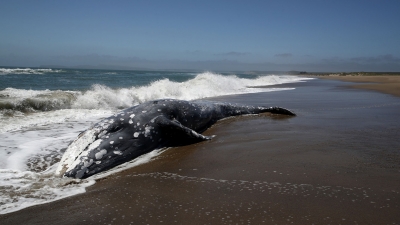
Often, conservation stories underline the importance of the role of all creatures-big and small-for balance in ecosystem. For instance, krill crustaceans barely two inches long are a huge link in the global food chain. If such a small organism can have a telling impact on the food chain, one can only imagine the kind of effect larger animals have in an ecosystem. So, when the population of a large animal plunges, it is always a cause for concern.
Grey whales are among the largest animals on Earth- nearly 50 feet long and weighing over 40 tonnes. These giants are known for their long annual migration of more than 15,000 km “between feeding grounds in the Arctic and breeding grounds in Baja Mexico” Recent research has revealed that the number of these fascinating creatures is witnessing a worrying slump- by nearly 40% in just six years. From 27,000 whales in 2016, the number stands at a concerning 16,650 today. Several factors are attributed to this decrease. One of them is the increase in strandings in 2019, when about 600 of these creatures washed up dead along the west coast of North America Though boat collisions and killer whale attacks caused a few of these deaths most of the dead whales were malnourished which takes us to n crucial of interconnectedness in an ecosystem. It is believed that the malnourishment could be the result of “the whales’ food sources of tiny crustaceans and other invertebrates they prey on in the Arctic shifting due to environmental changes. Further, the overall population among West Coast grey whales “coincides with diminished reproduction” While there were 383 baby whales during the calf production season last year, there have been a mere 217 newborns this year – “the lowest number since such counts began in 1994”
Grey whales were close to extinction several decades ago due to commercial whaling before their population improved due to timely conservation efforts. Even then, the 80s and 90s saw a plunge of about 40%, and eventually they rebounded. It is important for this whale population to recover too because they keep the population of certain other creatures in the food chain in check. Even in death-as carcasses- these large marine mammals help feed several other organisms.
Often, grey whales are washed up dead along the U.S. west coasts. Though boat collisions and killer whale attacks cause some deaths, researchers say malnourishment is a major reason. With tiny crustaceans and other invertebrates shifting due to environmental changes, the grey whales are left without food.
Picture Credit : Google




